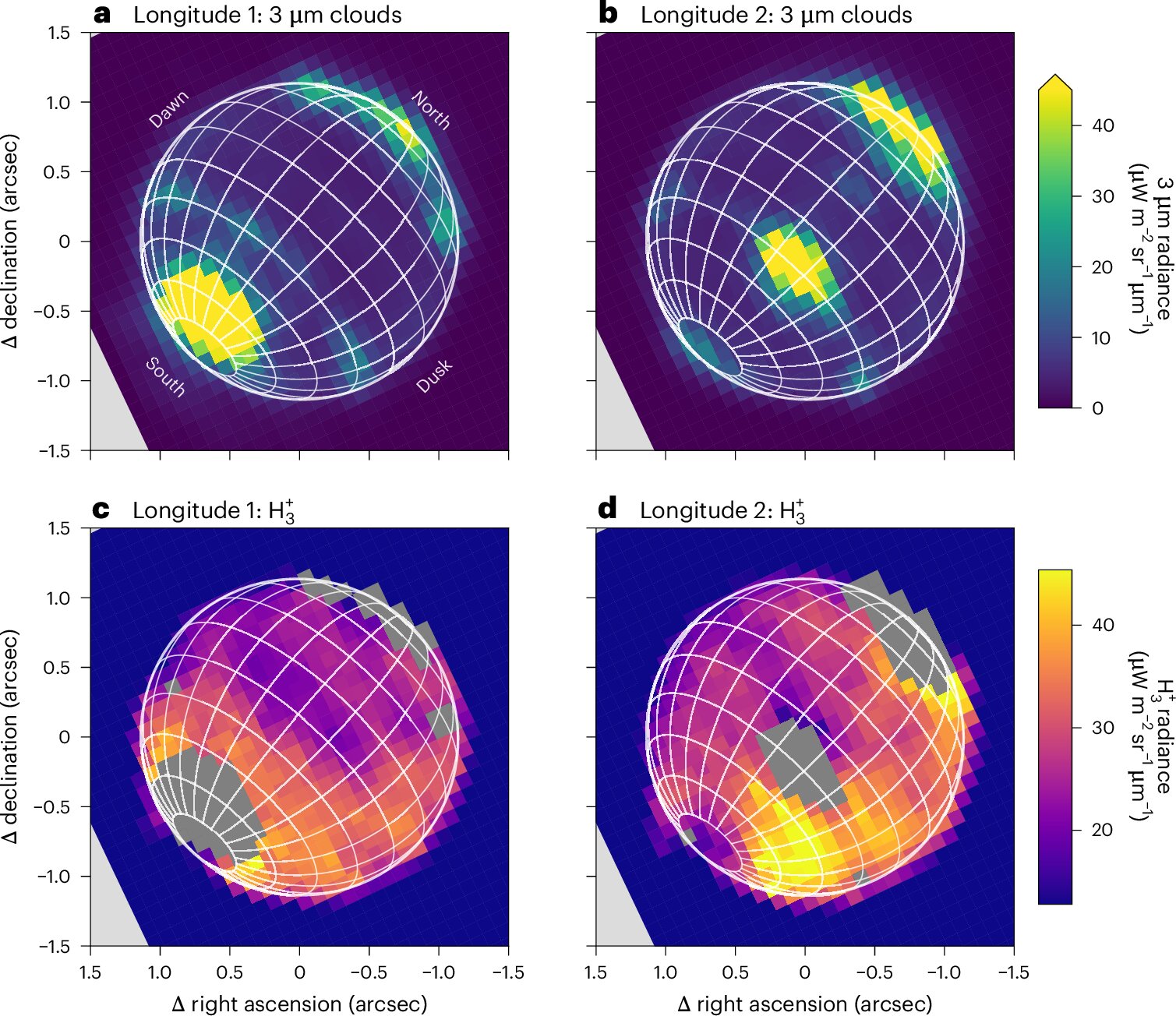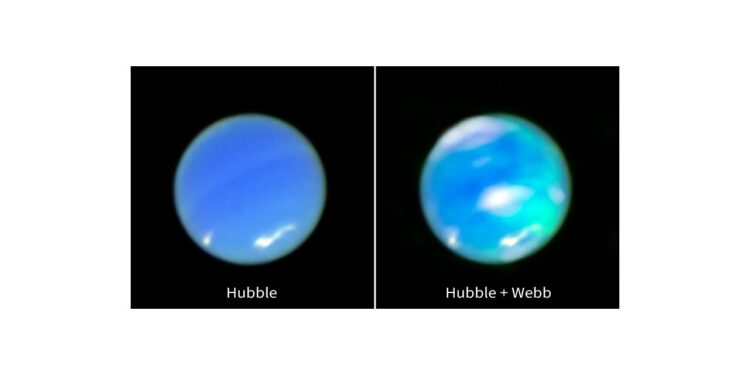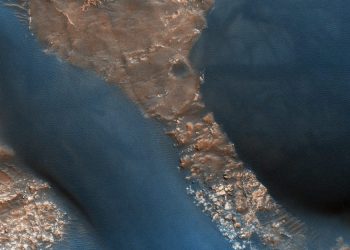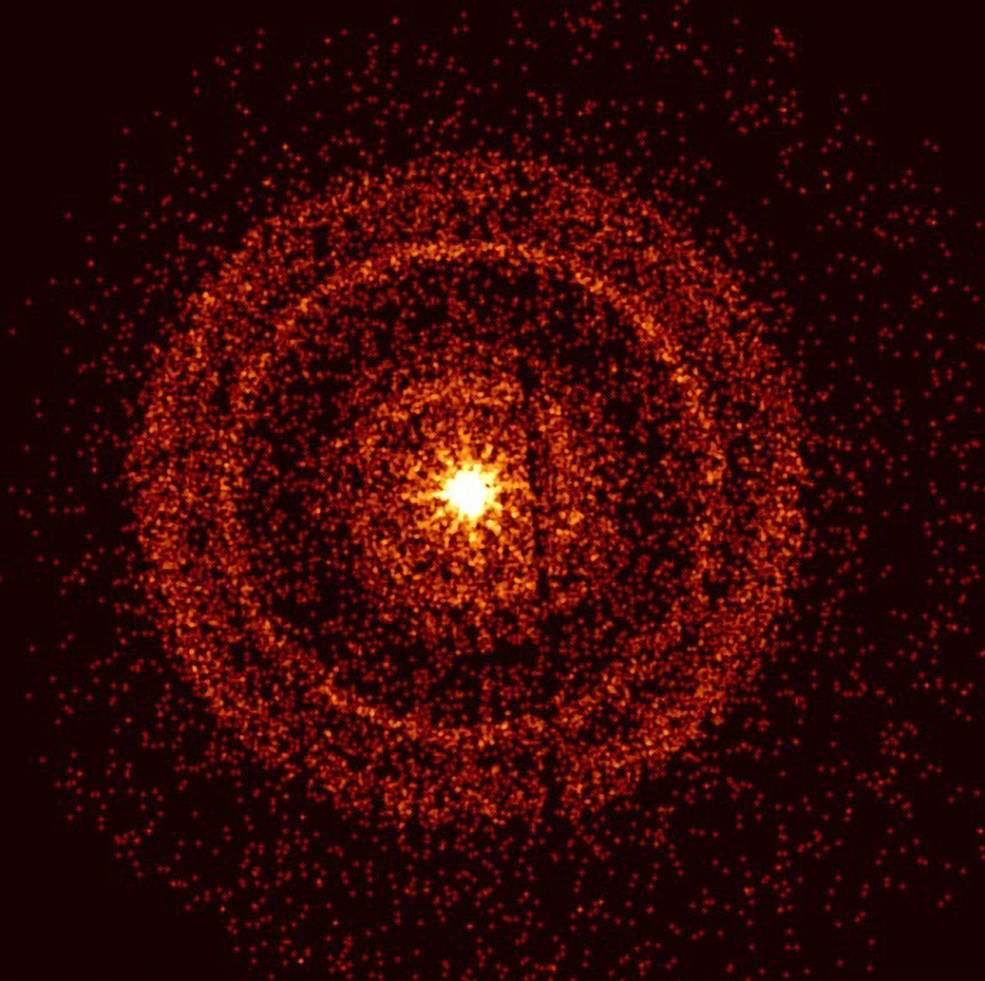After decades of speculation and missed opportunities, astronomers have finally captured undeniable evidence of auroras glowing in Neptune’s atmosphere. Using the unparalleled capabilities of NASA’s James Webb Space Telescope, researchers observed infrared emissions that confirm a long-suspected phenomenon—one that had remained invisible until now.
The discovery, published in Nature Astronomy, reveals more than just the existence of auroras. It opens a new chapter in our understanding of Neptune’s atmospheric structure, magnetic behavior, and its strange position among the outer planets.
A Breakthrough Decades in the Making
Neptune, located more than 4.5 billion kilometers from the Sun, has always been a challenging target. Its extreme distance, low brightness, and unusual magnetic field have made detailed observations nearly impossible from Earth. Although NASA’s Voyager 2 flyby in 1989 hinted at auroral activity, there had never been a direct visual confirmation—until now.
The Webb Telescope’s Near-Infrared Spectrograph (NIRSpec) allowed scientists to detect a strong emission line associated with H₃⁺, a molecular ion that forms when charged particles interact with a planet’s atmosphere. This emission is a well-known indicator of auroras on other gas giants, but had eluded detection on Neptune until these new observations.

Henrik Melin of Northumbria University, the study’s lead author, described the discovery as unexpected in its clarity. “It was so stunning to not just see the auroras, but the detail and clarity of the signature really shocked me,” he said.
One of the most surprising findings is the location of Neptune’s auroras. Unlike the concentrated polar light shows seen on Earth and other gas giants, Neptune’s auroras appear around its mid-latitudes. This anomaly is linked to the planet’s unusually tilted and offset magnetic field—originally discovered by Voyager 2—which deviates by 47 degrees from its rotational axis.
Because auroras occur where magnetic field lines funnel charged particles into a planet’s atmosphere, the strange geometry of Neptune’s field leads to auroral activity far from the poles. This magnetic behavior makes Neptune a unique laboratory for studying magnetospheric physics in the outer solar system.
A Puzzling Drop in Atmospheric Temperature
In addition to auroral imaging, the team used Webb to measure the temperature of Neptune’s ionosphere for the first time in over 30 years. The results were unexpected. Compared to Voyager 2’s measurements in 1989, Neptune’s upper atmosphere appears to have cooled dramatically—by several hundred degrees.
This cooling may explain why auroras on Neptune remained invisible for so long. Lower temperatures reduce the intensity of infrared emissions, making them nearly impossible to detect with previous instruments.
“I was astonished—Neptune’s upper atmosphere has cooled by several hundreds of degrees,” Melin noted. “In fact, the temperature in 2023 was just over half of that in 1989.”
Armed with these new insights, researchers now plan to monitor Neptune throughout the full solar cycle, a period of roughly 11 years during which the Sun’s magnetic activity fluctuates. By observing how solar winds affect Neptune’s magnetic field and auroral behavior over time, astronomers hope to better understand the origin of the planet’s magnetic tilt and the processes shaping its distant environment.
Future missions to Neptune and Uranus could also benefit from these findings. Infrared-sensitive instruments—like those aboard Webb—may be critical for studying the complex interactions between solar particles and the atmospheres of ice giants.
As Leigh Fletcher of the University of Leicester put it, “This observatory has finally opened the window onto this last, previously hidden ionosphere of the giant planets.”
The discovery doesn’t just complete the auroral puzzle among the solar system’s gas giants—it reshapes how we study the outermost regions of our planetary neighborhood.











